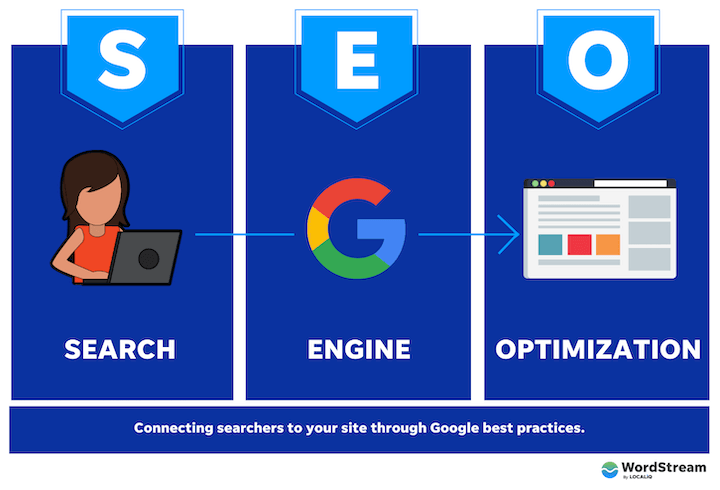
The mystical world of SEO is unknown to many, but if you have thought about starting a blog in 2023, this article will enlighten you with 7 top tips from an SEO expert.
Learn how to boost your ranking, get more backlinks and learn some good habits to take your blog to the moon!
Secrets of a Successful Blog Writer
To be completely honest, starting a successful blog is not really complicated or difficult – what it takes is consistency, determination and processes. If you nail those three areas, your blog will get more and more traffic over time, opportunities will come your way and you will be on the path to a location-independent income so you can work from anywhere in the World.
Sounds good right? Let’s dive in.
1. Create captivating headlines
The first thing to concentrate on is to try to get that click from the search results pages over to your website.
Trigger words
To do this, a great idea is to use emotional trigger words like “secrets”, “never before revealed”, “shocking” etc. to grab attention. This will gain more clicks through to the article. If you have existing blog posts, go and check now to see if you can add a trigger word before or after your main keyword.
Use numbers
Using numbers has also shown to improve your CTR. Super easy to implement, just edit your blog posts and ensure the number of tips you include in your blog correspond to the article title.
My Tip: Odd numbers have been proven to convert better than even numbers EXCEPT when the number is a benchmark number like 10, 25, 50 or 100.
Try to use numbers and lists like “5 Ways to…” or “7 Tips for…”
Questions

Another strategy is to ask thought-provoking questions like
“Are you making this common mistake?”
Questions are a great way to create intrigue and increase your CTR or click through rate. For ideas on questions related to your target keyword, you can look at the ‘people also ask’ or the ‘related searches’ section in the SERPs.
Cliffhangers

Another strategy I like to use is to write cliffhangers like “You’ll never believe what happened when…”
Another really easy tactic to try out and see how it pans out. Try testing over a period of 30 days and see if your traffic increases to that page.
Personalize
Try to write a more personalized headline. A good approach for informational blog posts, something like the following works well.
“You’re Applying Mascara Wrong (And here’s How to Fix It)”
Use brackets
And following on from the example above, using brackets is another really easy strategy to test on your site – simply add a phrase or word at the end of your blog post title and monitor the CTR of the page before and after you made the change.
And example could be “How to Get Your Child to Sleep [Finally!]”
2. Engaging introductions
Here are some tips for writing engaging introductions to your blog posts:
- Open with a startling statistic or fact that relates to your post’s topic. Surprising data engages readers quickly.
- Start with a relatable anecdote, story, or analogy that illustrates your post’s focus. Personalize the issue for readers.
- Ask a rhetorical or thought-provoking question to get your readers thinking deeply from the start.
- State the specific problem you are solving in the post so readers know what to expect.
- Reference current events or pop culture that provide context and make your post timely.
- Consider beginning with a “How many times have you…” style opening to be inclusive.
- Start by describing a common frustration or pain point your readers likely experience.
- Open with a vivid description or brief scenario that draws readers into your post.
- Provide an overview of what the post will cover and the value readers will get from it.
Strong introductions set the tone and invite your audience into the post.
Treat your opening lines with care – don’t waste the opportunity to make a great first impression – like the old saying goes
“You only get one chance to make a first impression”
3. Inject your personality and authenticity
Share personal stories and examples that shed light on who you are.
Don’t be afraid to open up. As an example, I like to work at my standup desk while walking slowly on my walking pad, something I write about on my own blog.
Here’s a few tips on how you can add your own personality into your writing
- Use humor when appropriate – funny anecdotes and tasteful jokes can bring posts to life.
- Don’t be afraid to take a stand or express your passions when relevant. Bold opinions show confidence.
- Use conversational language, contractions, and first-person pronouns for a casual, friendly tone.
- Allow your natural speaking voice to come through by reading posts aloud as you write – if it doesn’t sound like you would say it, then edit it.
- Give specific praise and criticism openly when discussing products/services/brands.
- Be transparent and open about past struggles or failures that relate to the post’s focus. Admitting flaws builds trust amongst your readers.
- Use creative metaphors, real-world analogies and vivid imagery to add unique flair.
- Ask rhetorical questions to provoke deeper thought and connect with readers.
- Don’t be afraid to get a little weird or whimsical when the tone permits – have fun with posts!
4. Stay consistent and regular

Here are some tips for staying consistent and posting regularly as a blogger – remember, you need to manage your time effectively and keep posting new content to your own site, and also write guest posts for other sites.
Being organized and not having distractions when you work will enable you to achieve your blogging goals. If your day allows, establish a set schedule for publishing new posts (e.g. every Monday and Thursday) and stick to it.
Consistency breeds success.
Another thing I have recently started is to create an editorial calendar to map out topics and themes weeks or months in advance. Having a plan makes sticking to a cadence easier. Just use a simple Google sheet to plan your content and then use colors to give you that boost when you complete a task. Set a minimum number of posts per week or month you will commit to and treat it like a quota to hit.
When doing keyword research try to include some topics which are evergreen – posts that are ready in case you can’t think of a timely topic that week. Repurposing old content can help fill gaps.
Draft content in batches to maximize your time investment. Don’t waste hours perfecting one post – I like to say to myself “Done is better than perfect”
Another thing I have done in my entrepreneurial life is to try to join groups of like minded people. If you can find a group of bloggers online it will really help you when things get tough – and hopefully you can add value to others too. Having a support system is a great way to keep accountable to your schedule and blogging goals.
5. Write guest posts to build backlinks
When you are trying to get your blog going, it is imperative to improve your Domain Authority (DA) or Domain Rating (DR) – And the only way to do this is to get backlinks to your site.
How do I get people to link to me, you ask. Well, the tried and tested strategy is to write guest posts for other websites, and then link back to your site. So depending on your schedule I mentioned above, try to build in some time to contact other blog site owners for guest posts, and also make some time to actually write the guest posts too.
Remember one great link can really move the needle in terms of SEO for your site.
Here are some of my other tips for leveraging guest posting to build quality backlinks:
- Make a list of reputable, high-authority websites in your industry that accept contributor posts.
- Pitch relevant post ideas tailored to each website and the value it would bring their audience.
- Offer to promote the finished piece on your own site and social media once published.
- Align guest posts with your own latest content and insert relevant internal links.
- Focus on building relationships with editors and making their jobs easy, not just a one-off post.
- Stick to websites where you can earn a contextual do-follow backlink in the author bio.
- Suggest ideas tied to trending topics and news that make timely pitches more appealing.
- Mention any domain authority growth or organic traffic rise you’ve achieved to build credibility.
- Volunteer to create other assets like infographics, videos or interviews in addition to written posts.
- Follow up professionally if you don’t hear back right away and offer to answer any questions.
6. Use a call to action instead of a conclusion
Unpopular opinion: Instead of writing a conclusion which sums up your article, try to get the reader to take an action once they finish the article. This will improve your overall time on site, and also decrease your bounce rate.
A few strategies I like to employ are below.
- Tell readers explicitly what you want them to do after reading rather than just recapping what they just read.
- Think beyond just asking for likes, comments, and shares. What action shows they really found your content valuable?
- Offer a related resource for more information or the next step on their journey. Send them somewhere specific.
- Suggest readers share the post with friends who would also benefit from the content. Social sharing is powerful.
- Invite them to check out other relevant posts on your site to keep their engagement going. Recommend specific pages.
- Prompt comments by asking an intriguing discussion question or soliciting feedback.
- Gate your most valuable content, tools, or assets behind an email signup to build your email list.
- Use a sense of urgency and scarcity with time-limited offers, discounts, or access to drive action.
Remember, readers expect to be guided – tell them exactly the next step you want them to take. Strong CTAs (call to action) will boost conversions helping your site’s metrics.
7. Internally link to other articles
An often overlooked strategy is to link internally between pages on your site. In doing this, you will send signals to Google that page A is related to page B, and so on.
Try not to force links in where they don’t naturally fit – if you can edit a sentence to add a link then you should 100% do it.
Try these tactics for some quick wins.
- Link to older evergreen content when you reference it or build upon it in a new post.
- Create “Post Links” sections where you recommend specific pages at the end of articles.
- Link to category or tag archives pages to point readers to more posts on the same subject.
- Build content upgrade paths by linking to more in-depth posts from related introductory posts.
- Use anchor text internal links instead of just URLs – optimize with keywords.
- Update old posts by adding new internal links to keep them fresh and valuable.
- Point category pages to your most recent and popular content within each section.
Internal links create a web that signals value and authority to search engines. Make sure you’re linking intentionally within your content.
So, now you have read this guide, the next thing to do is go ahead and work on your website user experience. Thankfully we have this great guide on how to improve your SEO by working on your UX.
****
How to write a blog post Q and A?
How can I optimize my website architecture?
- Use a silo structure with main categories and subcategories to organize your content logically.
- Make sure you have a text-based site map page that links to all important pages.
- Set up clean, SEO-friendly URLs without excessive dynamic parameters.
- Eliminate duplicate content issues.
- Check for broken links and fix 404 errors.
- Make sure pages load quickly by minimizing HTTP requests and enabling compression.
How can I improve my website speed?
- Use a tool like Google PageSpeed Insights to identify speed bottlenecks.
- Optimize and compress images to reduce file size.
- Enable caching in your CMS or with a caching plugin.
- Minify CSS, JavaScript and HTML files.
- Defer offscreen images and JavaScript.
- Upgrade to a faster web host if needed.
- Reduce redirects.
- Avoid bloated plugins that slow things down.
How can I optimize for voice search?
- Use natural language and conversational keywords in content.
- Answer questions clearly and provide specific details.
- Optimize for long-tail keyword phrases people use with voice search.
- Structure content in a Frequently Asked Question (FAQ) style.
- Make sure your site is mobile-friendly and loads fast.
- Publish helpful featured snippets and structured data where possible.
****





